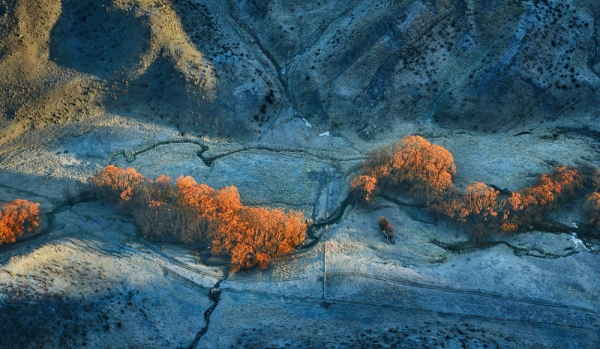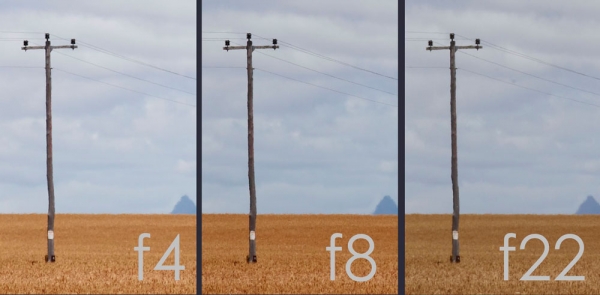
Middlehurst Station, New Zealand. Phase One XF 150MP with Schneider Kreuznach LS 80mm lens, f4 @ 1/1250 second, ISO 400. The sharpest aperture on the 80mm lens is between f5.6 and f8, but shooting from the air, it wasn’t possible to use one of these apertures and keep the shutter speed up and the ISO down. Knowing which aperture is sharpest for a particular lens doesn’t mean you can always use it.
When it comes to controlling depth-of-field, we know that the smaller the aperture, the greater the depth-of-field. So, surely the answer is to just use the smallest aperture and we’ll get the sharpest photo, right? Wrong!
It’s true that the smallest aperture, such as f22 or f32, will give you the greatest depth-of-field for your lens, but at apertures smaller than f16, another optical problem enters the equation: diffraction. Without explaining the scientific niceties, diffraction blurs our images, but it only becomes a problem at, say, f22. So whether we’re using a high resolution sensor or not, we try not to go any smaller than f16.
So, does f16 give us the sharpest overall photo? That depends on your lens, but again generally speaking, apertures of f5.6, f8 or f11 will produce a ‘sharper’ image than f16. Apertures of f2.8 and f4 can be just as sharp, depending on the lens, but they can suffer from depth-of-focus and curvature of field issues. And we’re not pretending to explain these issues in scientific terms, just outlining some of the challenges both lens designers and photographers face!
To determine your lens’s sharpest aperture, do this test. Lock your camera on a tripod with the lens pointed at an object with sharp edges – like a city skyline or a sheet of newsprint. Set the camera to aperture priority and the native ISO setting. Carefully focus the lens. If you’re not sure of your autofocus system, manually focus the lens with live view at 100%. Now take a series of photos, one at each aperture from f2.8 or f4 all the way through to f22 or f32.

To determine the sharpest aperture, open up all the files in your image processor at 100% and compare them visually. You will quickly see that f22 and f32 aren’t nearly as sharp as the other apertures. You may find it difficult to see any difference between, say f5. 6 and f8, in which case you know both of them are equally sharp.
Generally speaking, mid apertures are sharpest, but sometimes the wide-open apertures (e.g. f2.8) are just as sharp, at least in the middle of the image. And here is another issue. You should also review your test photos in the corners of the image as you’ll find that this is where image quality can quickly go pear-shaped!
The point of this exercise will show you that some apertures are sharper than others, and that the edges of the frame are not always as sharp as you’d like around the edges. And if you’re using a high resolution camera or digital back, the differences will be even more pronounced.